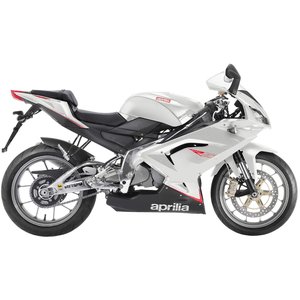Aprilia RS 125 [2006–2012]: A Two-Stroke Masterclass for the Passionate Rider
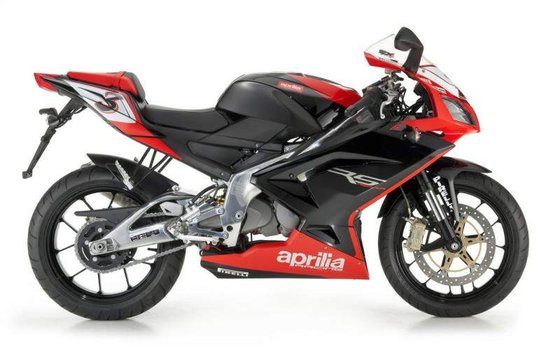
Introduction
The Aprilia RS 125 (2006–2012) isn’t just a motorcycle—it’s a rite of passage. Born from Aprilia’s relentless MotoGP pedigree, this pocket-sized rocket embodies the essence of racing heritage while offering an accessible gateway to high-performance motorcycling. Designed as a homologation special for budding racers and thrill-seekers, the RS 125 blends track-ready engineering with street-legal practicality (in certain markets). Even today, its razor-sharp handling and intoxicating two-stroke character make it a cult classic. Let’s dissect what makes this Italian stallion unforgettable.
Design & Aerodynamics: GP DNA in Every Curve
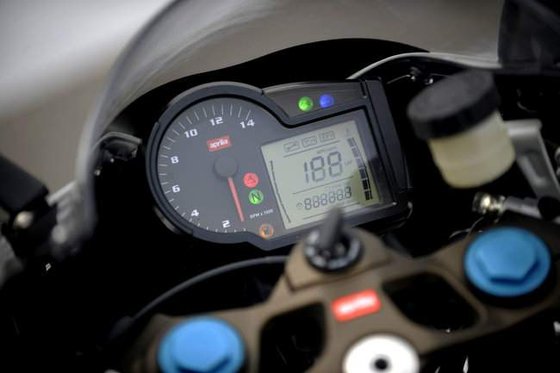
The RS 125’s design is a masterclass in function meeting aggression. Wind-tunnel-tested fairings slice through air with minimal drag, while the twin halogen headlights and angular tail mimic the RSV1000 Factory. The 2006 refresh introduced crossed-spoke wheels reminiscent of Aprilia’s GP bikes, and color schemes like Replica Spain’s No.1 or Alitalia Red scream racing pedigree.
At 1,955 mm (77 inches) long and 137 kg (302 lbs) wet, it’s compact yet purposeful. The 805 mm (31.7-inch) seat height suits shorter riders, but the rearset pegs and clip-ons demand a committed riding stance. Practicality? Forget it. This is a bike that prioritizes knee-down aesthetics over grocery runs.
Engine Performance: The Two-Stroke Symphony
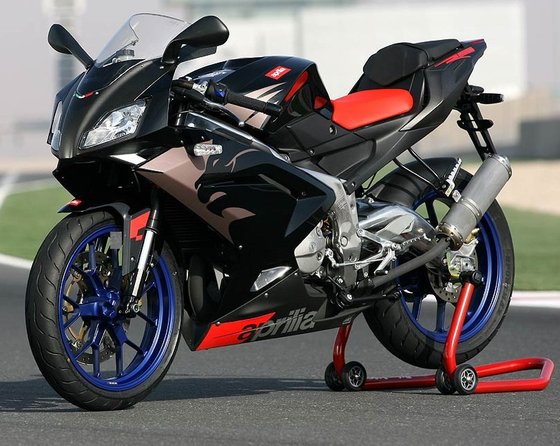
The heart of the RS 125 is its 124.8 cc Rotax-derived two-stroke single. Depending on the year and emissions compliance (Euro 2 vs. Euro 3), power fluctuates between 24.1 HP @ 10,000 RPM (Euro 3) and 28 HP @ 10,500 RPM (Euro 2). Torque peaks at 19 Nm (14 lb-ft) for earlier models, dropping to 17 Nm (12.5 lb-ft) post-2009 due to catalytic converters and secondary air systems.
Riding this engine is an education in momentum management. Below 8,000 RPM, it’s lethargic—a docile commuter. But cross the 10,000 RPM threshold, and the Dell’Orto carburetor (PHBH 28 or VHST 28) unleashes a frenetic braaap that pins you to the seat. The 6-speed gearbox demands constant shuffling to stay in the powerband, rewarding skilled riders with a 155 km/h (96 mph) top speed (pre-Euro 3).
Key Engine Details:
- Liquid cooling and Nikasil-coated cylinder ensure durability.
- Automatic oil injection eliminates pre-mixing (though purists may still tweak ratios).
- Euro 3 models trade raw power for cleaner emissions, making aftermarket exhausts a popular upgrade.
Handling & Chassis: Where Lightweight Meets Precision
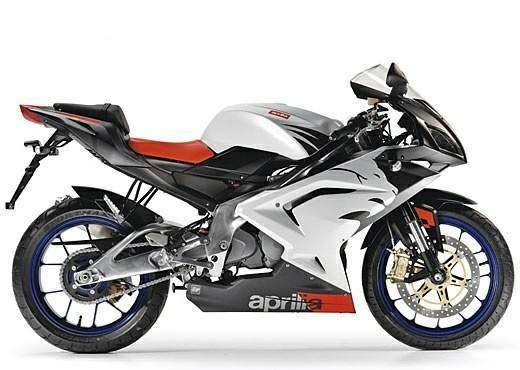
The RS 125’s aluminum twin-spar frame, borrowed from Aprilia’s GP bikes, is a work of art. Paired with an asymmetric swingarm, it delivers telepathic turn-in and mid-corner stability. Suspension includes 40 mm upside-down forks (120 mm travel) and a preload-adjustable monoshock—soft for track use but forgiving on bumpy roads.
Push hard, and the chassis shines. The 17-inch wheels shod with 110/70 (front) and 150/60 (rear) tires offer staggering lean angles. At 1,345 mm (53 inches), the wheelbase strikes a balance between flickability and straight-line composure. As Motorcycle USA noted: “Changing directions requires almost no muscle movement... you’ll be tackling corners faster than ever.”
Braking System: Confidence Inspiring, Race-Ready
Radial-mounted 4-piston calipers bite a 320 mm front disc, while a 2-piston setup handles the 220 mm rear. Braided steel lines ensure firm lever feedback. It’s overkill for a 125cc bike—until you’re diving into Turn 1 at triple-digit speeds.
Instrumentation & Features: Analog Meets Digital
The hybrid dash combines an analog tachometer with a digital display for speed, coolant temp, and lap times. The handlebar-mounted controls even interface with optical lap timers—a nod to its track roots.
Competition: How the RS 125 Stacks Up
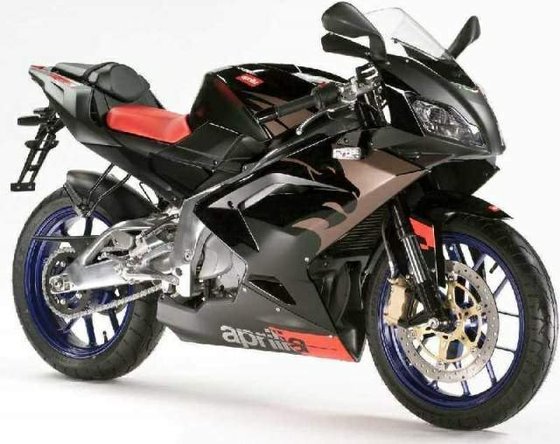
In the 125cc sport segment, the RS 125 faced rivals like:
- Honda CBR125R: A four-stroke, fuel-injected pragmatist. Softer suspension, 14.5 HP, and a 120 km/h top speed made it a commuter favorite—but no match for Aprilia’s adrenaline.
- Yamaha YZF-R125: Sleeker and tech-heavy (liquid-cooled 4-stroke, 15 HP), but weighed 138 kg (304 lbs) and lacked the RS’s raw edge.
- KTM 125 Duke: Naked and playful, but not a true supersport contender.
Why the RS 125 Dominated:
- Power-to-weight: 28 HP vs. 15 HP (CBR125R) in a lighter package.
- Track DNA: Radial brakes, GP chassis, and rearset ergonomics.
- Two-stroke thrill: A dying breed, offering a visceral, high-revving experience.
Maintenance: Keeping the Legend Alive
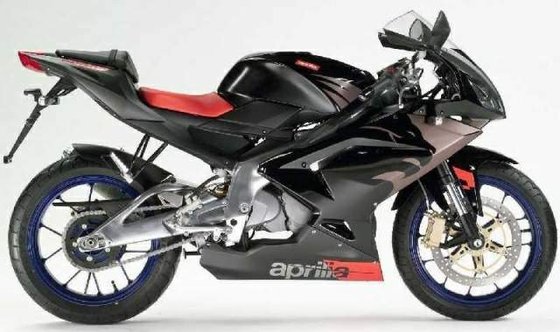
Owning a two-stroke requires diligence:
1. Oil Injection System: Check the separate oil tank and lines regularly. Upgrade to synthetic oils for better lubrication.
2. Carburetor Tuning: Clean jets annually; consider a performance kit for Euro 3 models.
3. Exhaust Care: Decoke the expansion chamber every 5,000 km. Aftermarket pipes (like Arrow or Giannelli) boost power but may require rejetting.
4. Suspension: Refresh fork oil every 2 years. MOTOPARTS.store offers premium shock upgrades for track enthusiasts.
5. Brakes: Swap pads to sintered compounds for track days.
Pro Tip: The Rotax engine is robust, but piston rings wear faster than four-strokes. Inspect every 10,000 km.
Conclusion: A Timeless Track Weapon
The Aprilia RS 125 isn’t just a motorcycle—it’s a philosophy. It teaches riders to earn their speed, to dance on the edge of the powerband, and to respect the art of cornering. While emissions regulations have silenced its two-stroke successors, the 2006–2012 RS 125 remains a beacon of analog thrill. Whether you’re hunting apexes or turning heads on a Sunday ride, this Aprilia is a masterclass in passion over pragmatism.
Ready to unleash its full potential? Explore MOTOPARTS.store for performance exhausts, suspension kits, and OEM replacements to keep your RS 125 screaming.
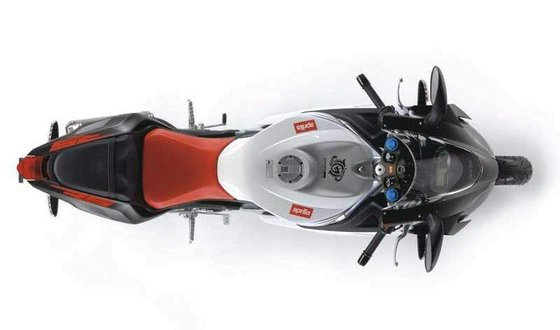










Specifications sheet
| Engine | |
|---|---|
| Stroke: | Two-stroke |
| Max power: | 21 kW | 28.0 hp |
| Max torque: | 19 Nm |
| Fuel system: | Dell'Orto PHBH 28 BD carburetor |
| Max power @: | 10500 rpm |
| Displacement: | 125 ccm |
| Max torque @: | 9000 rpm |
| Configuration: | Single |
| Cooling system: | Liquid |
| Emission details: | Euro 3 (2006-2012 models vary), catalytic converter, secondary air system |
| Compression ratio: | 12.5:1 |
| Lubrication system: | Separate mixing with variable displacement volumetric pump |
| Number of cylinders: | 1 |
| Dimensions | |
|---|---|
| Wheelbase: | 1345 mm (53.0 in) |
| Dry weight: | 127 |
| Wet weight: | 142 |
| Seat height: | 805 mm (31.7 in) |
| Overall width: | 720 mm (28.3 in) |
| Overall height: | 1100 mm (43.3 in) |
| Overall length: | 1955 mm (77.0 in) |
| Ground clearance: | 163 mm (6.4 in) |
| Fuel tank capacity: | 14 L (3.7 US gal) |
| Drivetrain | |
|---|---|
| Final drive: | chain |
| Gear ratios: | 1st 10:30, 2nd 14:29, 3rd 17:27, 4th 19:25, 5th 21:24, 6th 22:23 |
| Transmission: | 6-speed, multi-plate wet clutch |
| Rear sprocket: | 40 |
| Front sprocket: | 17 |
| Primary drive ratio: | 63/19 (3.32) |
| Maintenance | |
|---|---|
| Brake fluid: | DOT 4 |
| Spark plugs: | NGK CR8E or CR8EIX |
| Coolant capacity: | 1.2 |
| 2-stroke oil type: | Fully synthetic API TC or JASO FC |
| Chain maintenance: | 118-link DID 520V2 or equivalent, lubricate every 500km |
| Oil tank capacity: | 0.6 |
| Tire pressure (rear): | 2.5 bar (36 psi) solo / 2.8 bar (41 psi) with passenger |
| Tire pressure (front): | 2.25 bar (33 psi) |
| Additional Features | |
|---|---|
| Electrics: | 12V 180W alternator, LED rear light (2010+ models) |
| Instrumentation: | Analog tachometer with digital speedometer, lap timer |
| Special editions: | Replica SBK, Max Biaggi, Spain's No.1 color schemes |
| Chassis and Suspension | |
|---|---|
| Frame: | Cast aluminium twin-spar with cross-ribbing reinforcement |
| Rear tire: | 150/60-17 |
| Front tire: | 110/70-17 |
| Rear brakes: | 220mm single disc, 2-piston caliper |
| Front brakes: | 320mm single disc, radial 4-piston caliper |
| Rear suspension: | Aluminium swingarm with monoshock, adjustable preload, 120mm travel |
| Front suspension: | 40mm upside-down hydraulic fork, 120mm travel |



